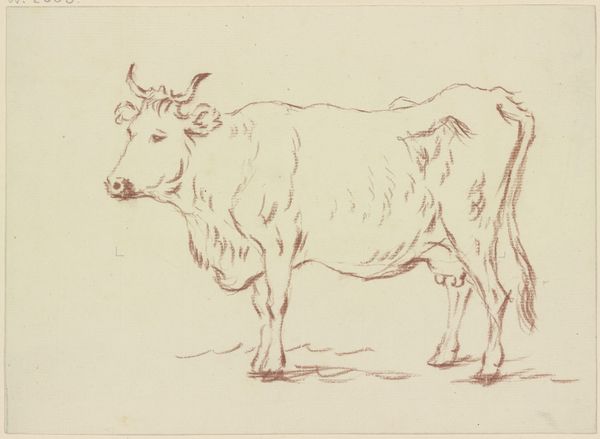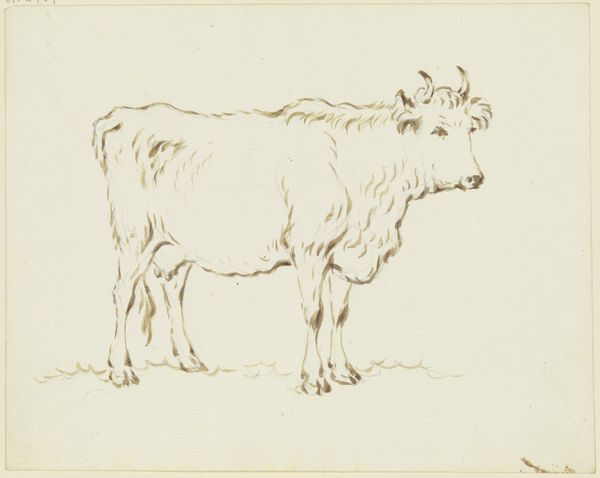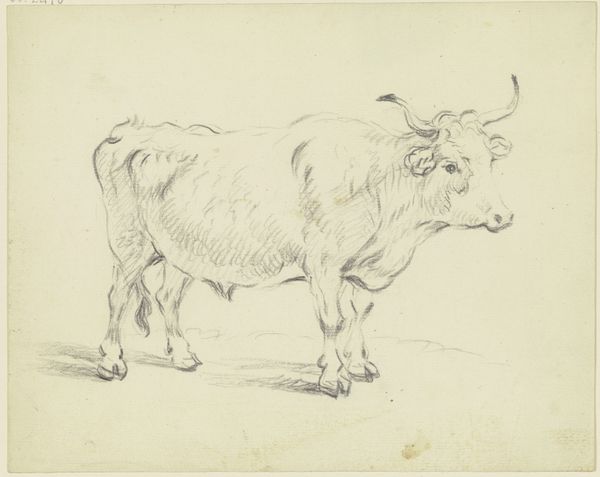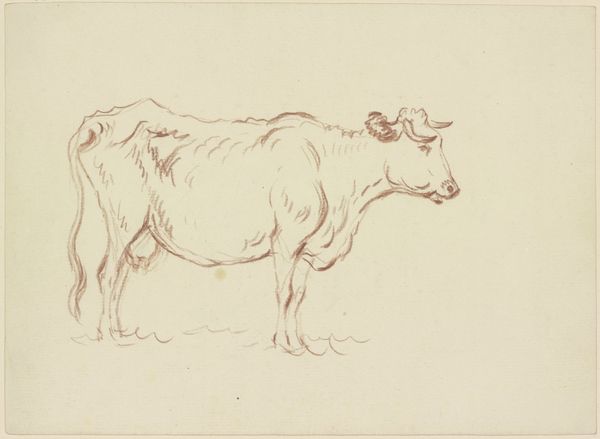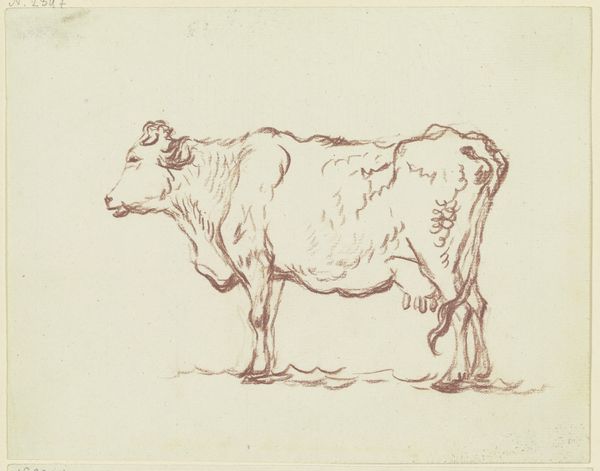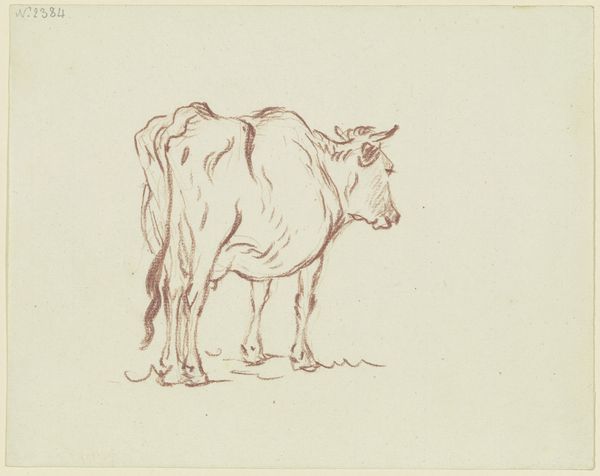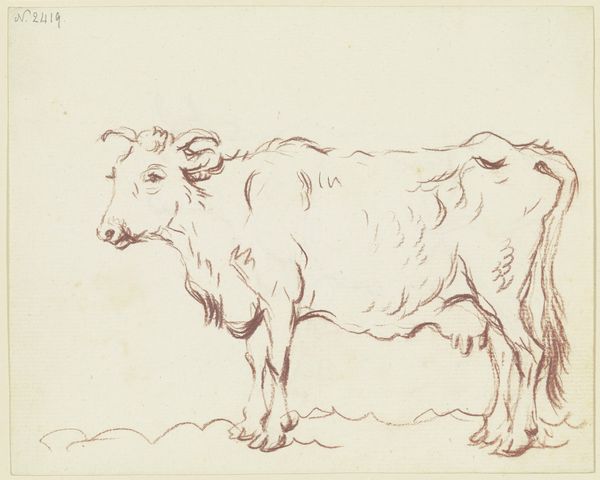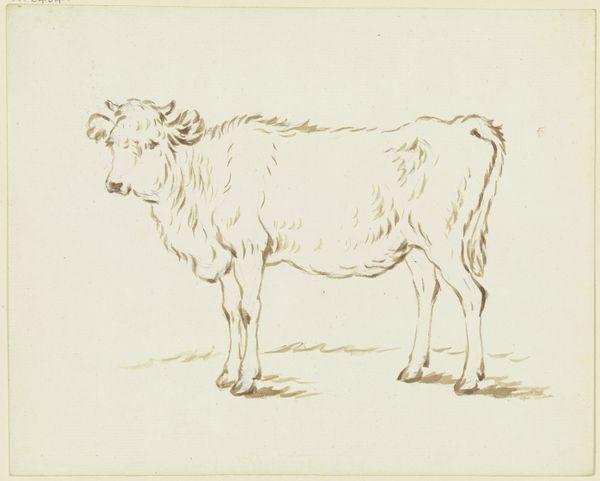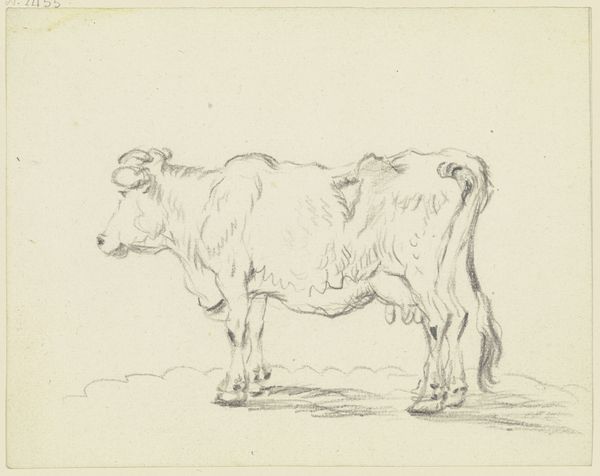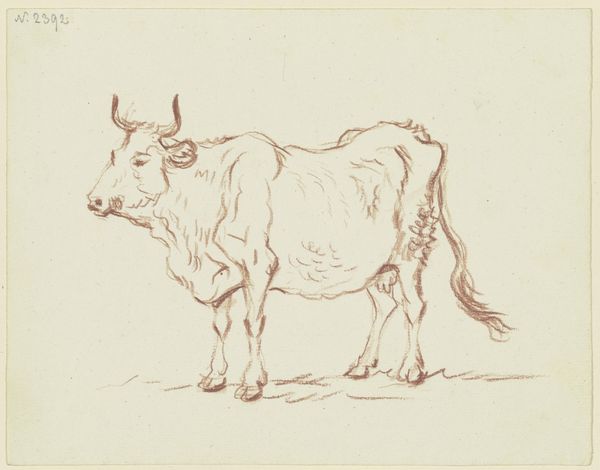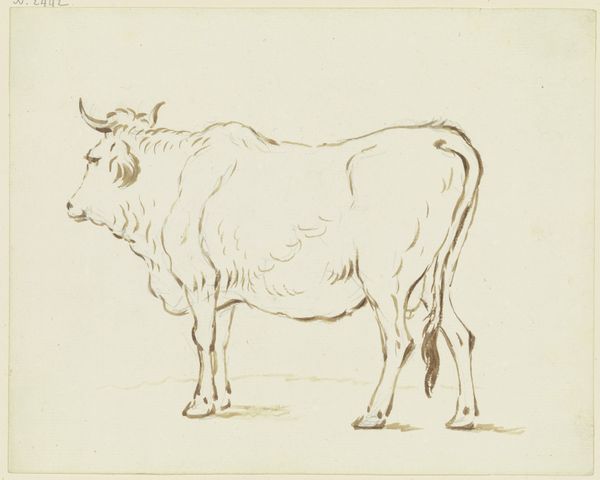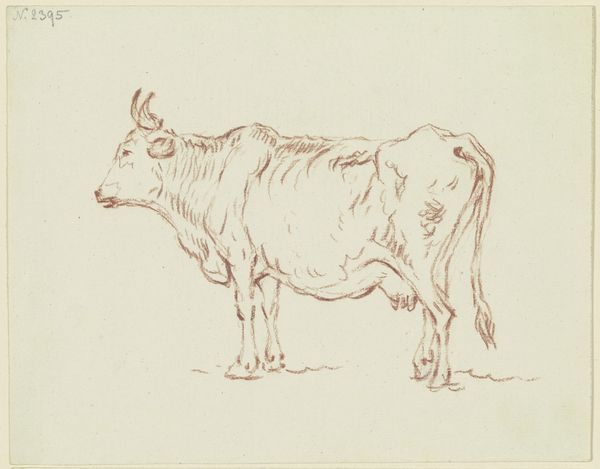
Stehendes Rind nach links, in leichter Verkürzung rückansichtig
0:00
0:00
drawing, red-chalk, dry-media, charcoal
#
drawing
#
animal
#
red-chalk
#
landscape
#
etching
#
figuration
#
dry-media
#
pencil drawing
#
15_18th-century
#
charcoal
#
realism
Copyright: Public Domain
Curator: Ah, here we have a rather charming drawing, "Stehendes Rind nach links, in leichter Verkürzung rückansichtig," which translates to "Standing Cow to the Left, Slightly Foreshortened, Seen from the Back." It's by Friedrich Wilhelm Hirt and rendered in red chalk. Editor: Well, the first thing that strikes me is its almost skeletal quality. It feels like an anatomical study more than a pastoral scene, which I find quite affecting. The simplicity has a raw honesty to it, you know? Curator: Indeed. Hirt's choice of red chalk really lends itself to that anatomical feel. Red chalk became very popular for studies because it mirrors the sanguine tone one might find beneath the skin, offering an almost visceral sense of the subject’s physical reality, even as we reduce the animal to its outline, the shadow of its presence. It’s just the cow, distilled. Editor: And you have to wonder about the paper itself. It probably wasn’t some pristine, acid-free archival sheet we have now. It has more character than a blank digital canvas, and, no doubt, the roughness or imperfections of the page directed Hirt’s touch as much as the subject. Speaking of, the drawing implies something agricultural. Were these studies done for estate owners? To, in effect, take inventory or manage animal populations for increased profit? It doesn’t strike me as particularly sentimental or symbolic, I suspect they had utility for the patron as much as the artist. Curator: A fascinating point! Yes, drawings like these would have served a dual purpose. It certainly allowed artists to practice capturing nature's forms, but likely, patrons were interested in accurate representations of their livestock, a clear testament to prosperity and rural authority. Think of it as livestock portraiture, where the canvas embodies economic control rather than aesthetic contemplation. Editor: And, of course, all the labor that is often unseen: the animal’s own, and then the farm workers caring for these prized resources that are so valuable as commodity. Curator: Absolutely. There's a story beyond the red chalk, the simple lines, and paper. These works connect art, rural work and landscape, wealth, and ownership, even as we focus solely on the art's representational qualities or apparent naturalism. Editor: Exactly! And that's where art transcends mere depiction and enters into dialogue with the structures that shape our world. This drawing asks questions quietly, but firmly. Curator: Well said! This artwork invites a unique appreciation of its place, reminding us that the act of drawing and making are steeped in materiality, intention, and the silent forces of capital and class.
Comments
No comments
Be the first to comment and join the conversation on the ultimate creative platform.
